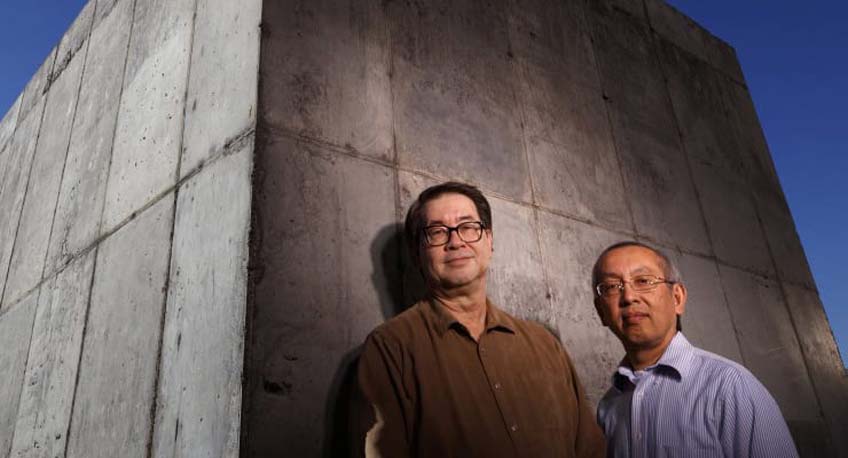
This 'Conductive Concrete' shields against electromagnetic attack
Christopher Tuan and Lim Nguyen, engineers at the University of Nebraska, have successfully found a cost-effective conductive concrete, which will shield electronics against electromagnetic pulse (EMP) attacks, which could cripple vital electronic systems, threatening national security and critical infrastructure, such as power grids and data centers. The technology is ready for commercialization, and the University of Nebraska-Lincoln has signed an agreement to license it to American Business Continuity Group LLC (ABC Group), a developer of disaster-resistant structures. The researchers first developed their EMP-shielded conductive concrete to melt snow and ice from surfaces, such as roadways and bridges. They also recognized and confirmed it has another important property – the ability to block electromagnetic energy. Their technology works by both absorbing and reflecting electromagnetic waves.
The team replaced some standard concrete aggregates with their key ingredient – magnetite, a mineral with magnetic properties that absorbs microwaves like a sponge. Their patented recipe includes carbon and metal components for better absorption as well as reflection. This ability to both absorb and reflect electromagnetic waves makes their concrete more effective than existing shielding technologies. The engineers also claim that their concrete mix is more cost-effective. To demonstrate its effectiveness, ABC Group recently built a prototype structure at its disaster recovery complex in Lakeland, Florida. The Engineers Tuan and Nguyen continue to investigate additional uses for conductive concrete, including improving de-icing and radiant heating and anti-static flooring applications.
